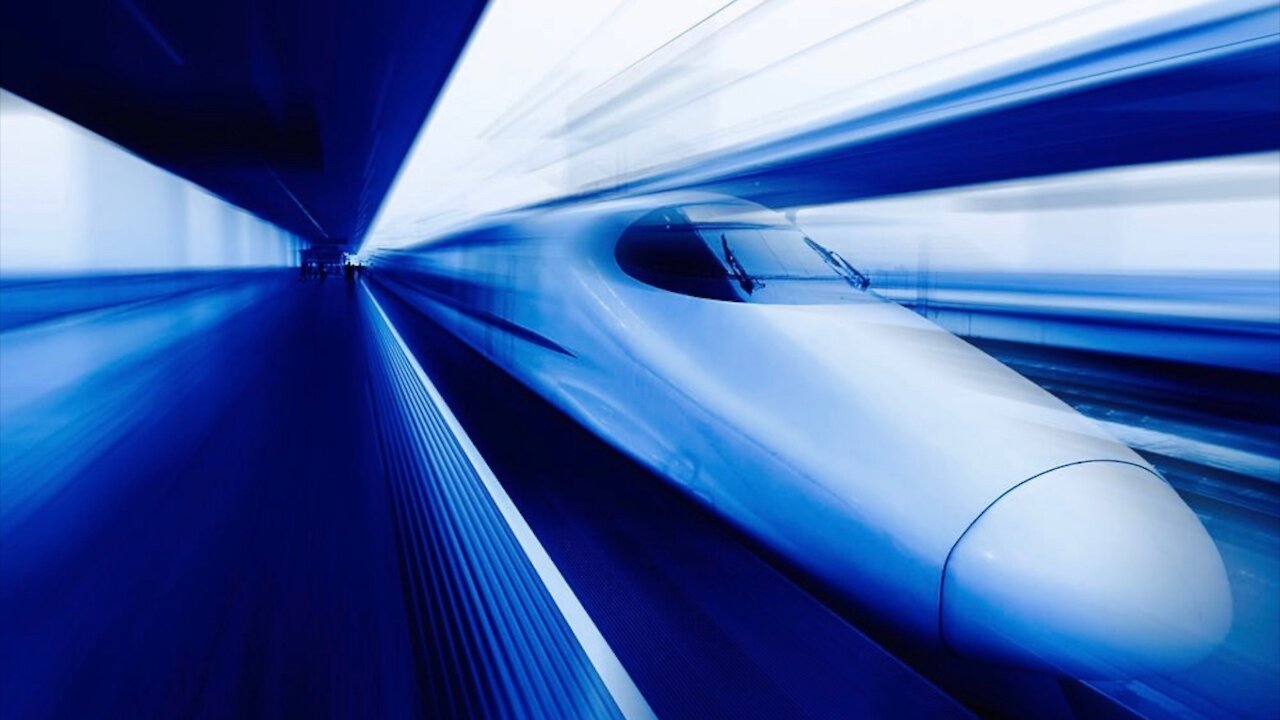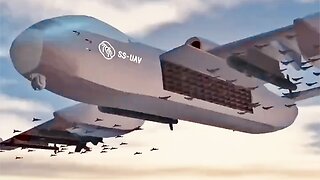Premium Only Content

New MagLev Train Will Take You Faster Than MACH 1 - The Hyperloop
Hyperloop will reinvent transportation to eliminate the barriers of distance and time. Hyperloop is a new mode of transportation that moves freight and people quickly, safely, on-demand and direct from origin to destination. Passengers or cargo are loaded into the Hyperloop vehicle and accelerate gradually via electric propulsion through a low-pressure tube. The vehicle quickly lifts above the track using magnetic levitation and glides at airline speeds for long distances due to ultra-low aerodynamic drag. Hyperloop systems will be built on columns or tunneled below ground to avoid dangerous grade crossings and wildlife. It’s fully autonomous and enclosed, eliminating pilot error and weather hazards. It’s safe and clean, with no direct carbon emissions.
A growing global economy requires faster, cheaper, safer and more efficient transportation modes. Our roads, airports, and ports are congested. We haven’t had a new form of transport in 100 years, and we’re due for one, especially one that is ultra-fast, on-demand, direct, emission-free, energy efficient, quiet and has a smaller footprint than other high-speed transport modes. Hyperloop is additive to existing forms of transportation and will integrate seamlessly with the transport ecosystem.
Why now? People have been dreaming of high-speed travel in tubes, including in vacuum, for more than a century. And many of the technologies we’re combining have been around for a while: linear electric motors, maglev, vacuum pumps. The catalyst was SpaceX CEO Elon Musk releasing his white paper in the summer of 2013. Musk presented a brilliant system architecture. We started with his basic designs and, after considering how we could provide value to the world as a whole, added a focus on moving freight in addition to passengers. We then started from the bottom-up to innovate on the technology and cost elements to deliver real value.
You’re talking about going over 1,000km/h (600 mph) inside a tube. Is Hyperloop safe? The Hyperloop is designed to be inherently safer and more reliable than maglev or high-speed rail. We have no at-grade crossings (by far the leading risk posed by trains), so there are no interactions with other forms of transport or wildlife. We are fully autonomous, so there is no driver related error. We are immune from most weather events. We will have multiple emergency braking techniques, triggering an immediate braking of the vehicle. Vehicles will have a full suite of life support systems, and we have the ability to re-pressurize the tube if needed. Safety is the number-one advantage that the Hyperloop system provides and in our design and engineering efforts it takes precedence above everything. We strive to surpass the safety of all existing transport systems. Additionally, we are building a dedicated safety team to work with authorities to define and implement best practice protocols.
What will it feel like riding in the Hyperloop? Although Hyperloop will be fast, the systems we are building will accelerate with the same tolerable G forces as that of taking off in a Boeing 747. With Hyperloop you will be accelerating and decelerating gradually and, depending on the route, we will incorporate banking into our designs to eliminate G forces even more. It will be as smooth as riding an elevator. And there’s no turbulence.
Won’t it be scary being inside that little pod in a tube with no windows? Maybe for some, but most people have gotten pretty used to flying 500 mph at 30,000 feet in an aluminum tube no wider than 8 meters. We can use music, lighting and high-definition screens to give people a greater sense of comfort. Our design partners have also come up with some cool solutions that would let you see outside the vehicle as it travels.
What about earthquakes? Our support structures will incorporate isolators and dampers to minimize response to seismic vibrations. Hyperloop One is also collaborating with world leaders in earthquake alert systems.
What happens if there's a sudden breach in the tube? The increased drag due to air resistance will slow the pod down. We can section off parts of the route and re-pressurize that section in the case of emergency. Every pod will have emergency exits if needed but mostly pods will glide safely to the next portal (station) or egress point.
Music: Spirit Must Train by Dhruva Aliman
Amazon - https://amzn.to/2B9tGa7
https://music.apple.com/us/artist/dhruva-aliman/363563637
https://dhruvaaliman.bandcamp.com/album/road-of-fortunes
http://www.dhruvaaliman.com/
Spotify - https://open.spotify.com/artist/5XiFCr9iBKE6Cupltgnlet
#future
#transportation
#speed
-
 6:44
6:44
Seeker Land
2 months agoChina's New Deadly Drone Mothership - Jiu Tian - World's First Airborne UAV Launcher
123 -

MattMorseTV
4 hours ago $8.96 earned🔴Sunday Gaming🔴
34.7K1 -
 LIVE
LIVE
Joker Effect
1 hour agoINTERVIEWING Rumble Gaming community members: Viewbotting and how they see the current landscape.
469 watching -
 1:45:53
1:45:53
Nerdrotic
4 hours ago $9.04 earnedUnravelling the Secrets of Skinwalker Ranch | Forbidden Frontier #115
55.8K4 -
 41:56
41:56
Athlete & Artist Show
4 hours ago $0.27 earnedAustin Ekeler: Going From "0 Star Recruit" To Leading The NFL In TD's, New Fan App | FROM THE VAULT
7.53K1 -
 2:46:49
2:46:49
Barry Cunningham
9 hours agoNOW THEY FEAR US! | RFKJR STRIKES BACK | JD VANCE ON PRESIDENT TRUMP | AND MORE NEWS!
51.6K32 -
 LIVE
LIVE
Spartan
4 hours agoCharlotte Qualifier watch party + Ranked and Expedition 33
111 watching -
 6:09:54
6:09:54
bigbossrobinson
8 hours agoLIVE - DOUBLE IMPACT - RESIDENT EVIL 4 & METAL GEAR SOLID Δ: SNAKE EATER
21.8K -
 8:18
8:18
MattMorseTV
6 hours ago $5.81 earned2.2 MILLION in ONE YEAR.
35.1K122 -
 14:37
14:37
Colion Noir
9 hours agoCanadian Police Chief Urges Citizens To Comply With Home Invaders And Hide
72K88